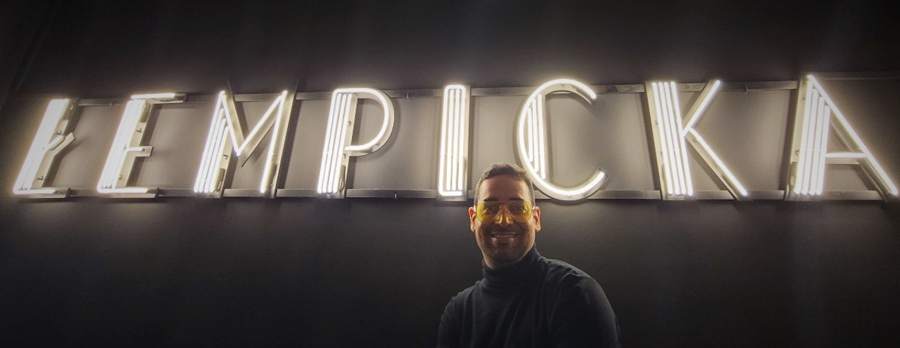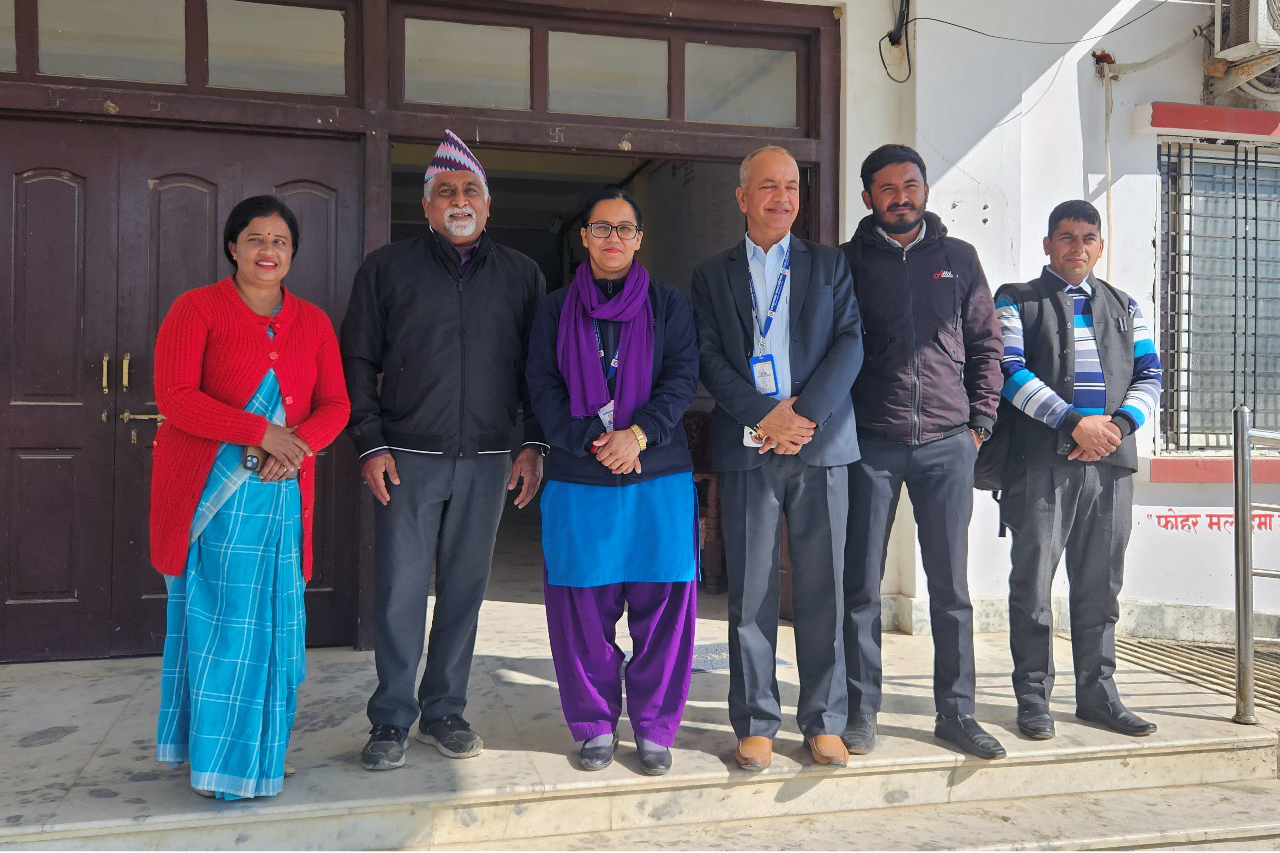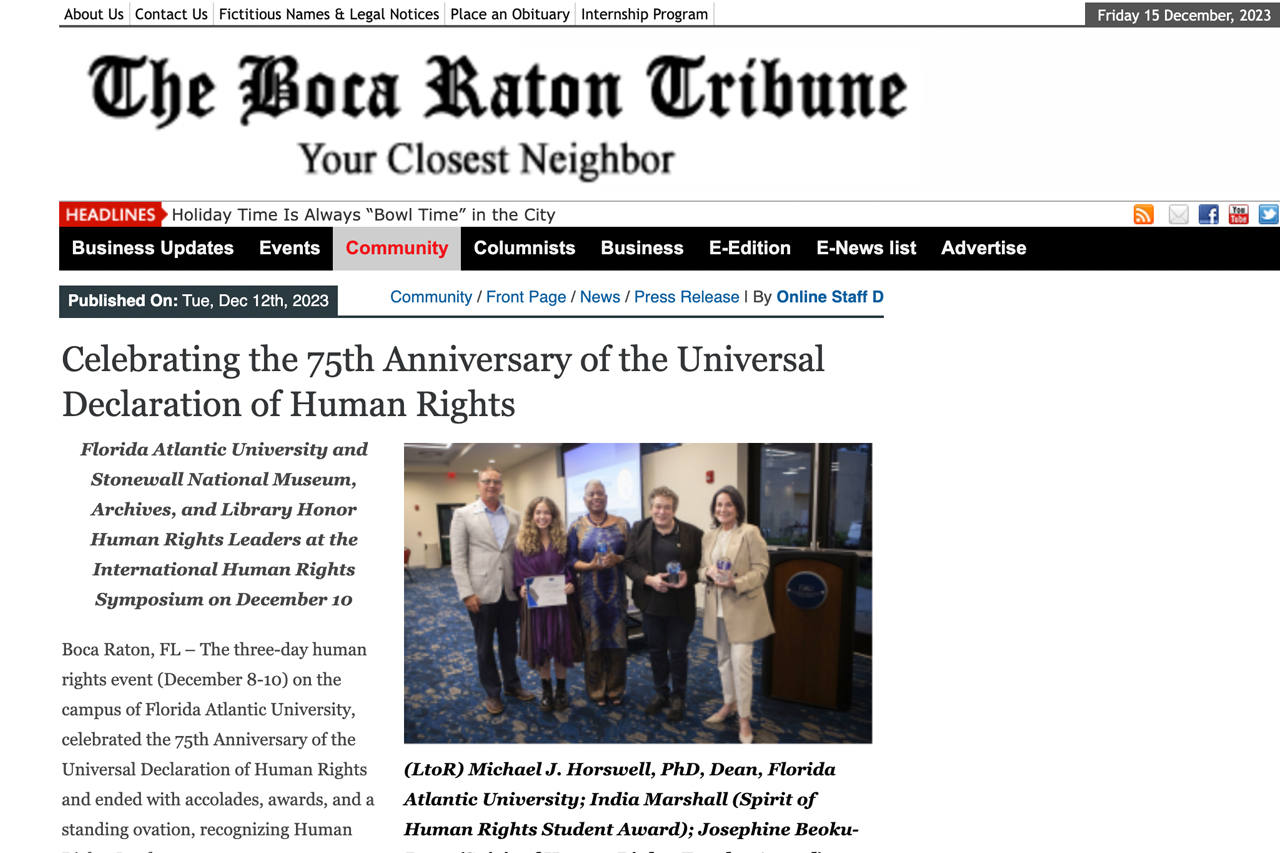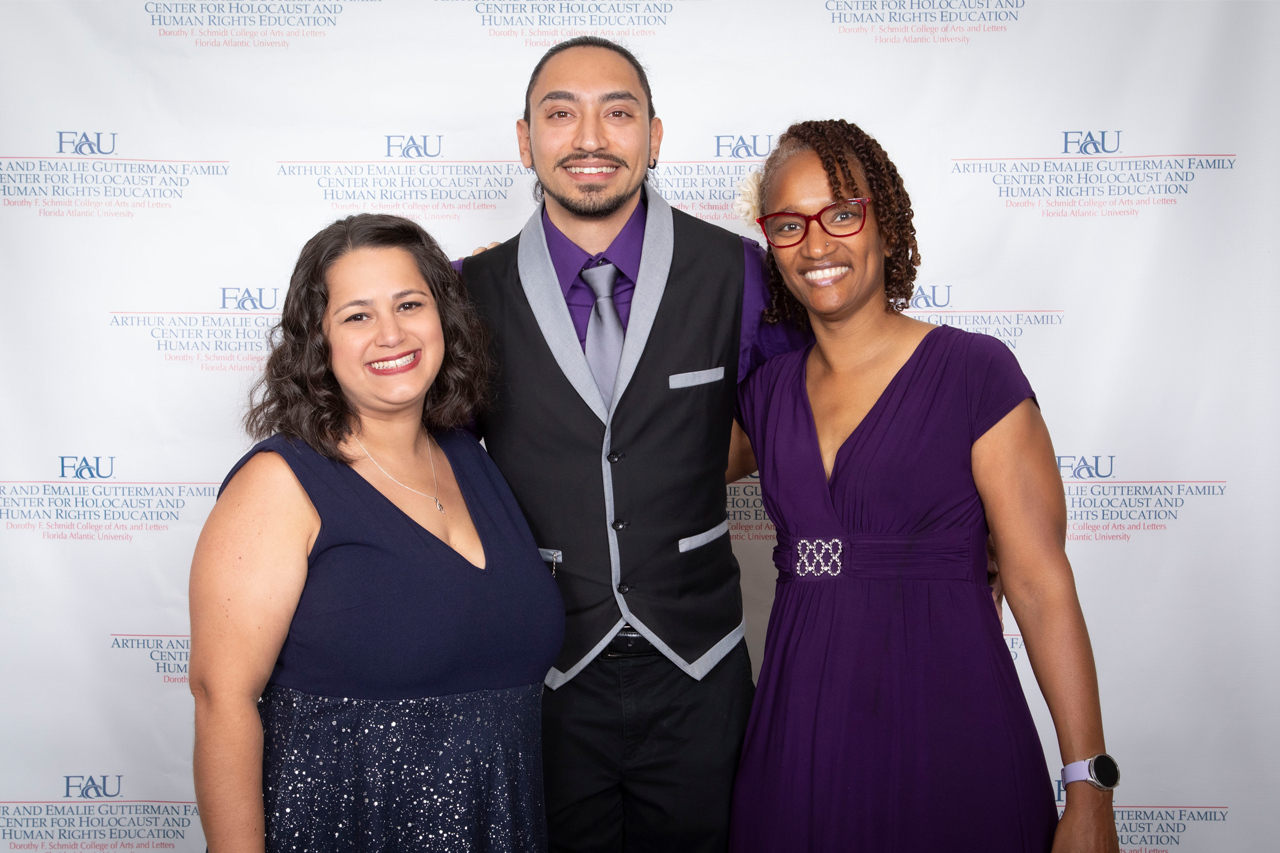FAU Exchange in Poland: From Nazi-Occupation to Academic and Jewish-Life Revival
Friday, Sep 15, 2023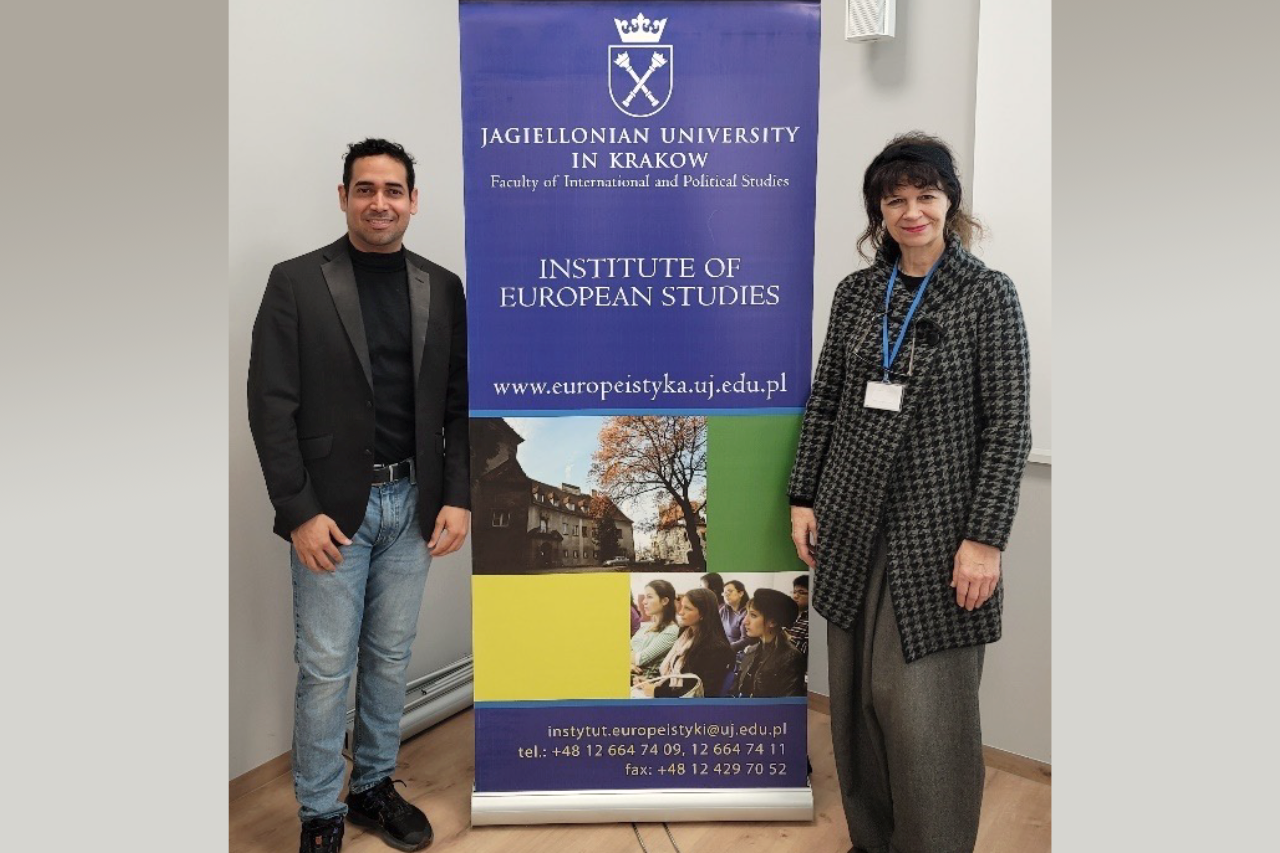
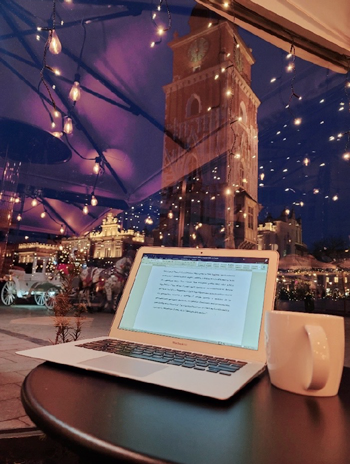
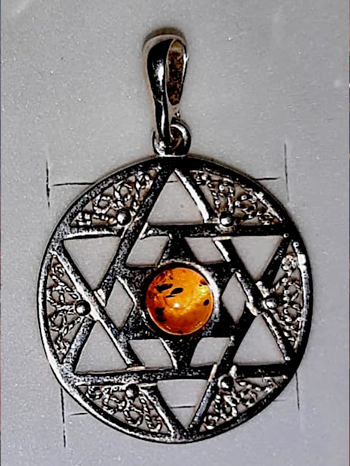
A Glance to Old Town Krakow
Although Poland is not within the first options in the Old Continent to visit, it is a primary destination for tourists exploring history, Christian and Jewish religions, education, and geopolitics. It is not only home of the former largest extermination camp (now the Auschwitz-Birkenau Museum, which received 2.32 million visitors in 2019). Like the amber, which is the symbol of the country since Neolithic times, Poland is still a gem hidden in the heart of Europe.
In Krakow, I reserved a room in Old Town, a UNESCO World Heritage site. My room was located walking distance to some places of interest: Jagiellonian University, the Jewish Community Centre, and the Main Square (the largest medieval plaza of any European city). The Main Square is transports me back in time while hearing horse-drawn carriages and drinking coffee at one of the cafés with menus scribbled on medieval walls or blackboards.
In those times, the invaders were interested in power, ideological influence, and wealth of Krakow. Respectively, a visitor can identify these components by taking a glance towards the imposing Royal Route, the Gothic St Mary's Basilica, and the Renaissance-styled Cloth Hall with its amber and jewelry stores.
Jagiellonian University: from Nazi-Forced Obscurantism to Academic Freedom
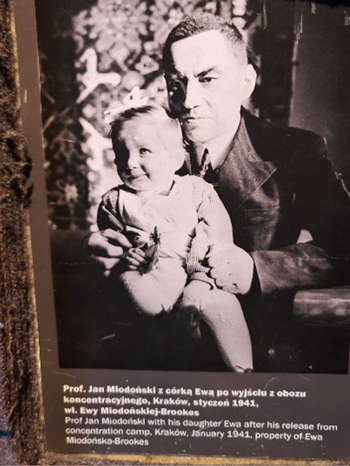 My first academic visit was to Jagiellonian University (JU). Here it was inevitable to remember the Nazi Occupation in 1939 and the following military operation. During this operation, the Nazis arrested professors, staff, and students from JU, along with others from different schools for a total of 183 individuals. According to the Nazi Governor-General Hans Frank, the charge against these education centers was that “they are nothing but the mines of hatred towards the Germans.” As a result, all the schools where “closed down” and 30 members of the academic community died in Sachsenhausen-Oranienburg concentration camp or shortly after they were released.
My first academic visit was to Jagiellonian University (JU). Here it was inevitable to remember the Nazi Occupation in 1939 and the following military operation. During this operation, the Nazis arrested professors, staff, and students from JU, along with others from different schools for a total of 183 individuals. According to the Nazi Governor-General Hans Frank, the charge against these education centers was that “they are nothing but the mines of hatred towards the Germans.” As a result, all the schools where “closed down” and 30 members of the academic community died in Sachsenhausen-Oranienburg concentration camp or shortly after they were released.
Image: A professor of Jagiellonian University and his daughter after his release from a concentration camp
Although I had read about the Nazi Occupation before, I learned the relevance of JU’s resistance in this trip. On March 10, I visited Schindler’s Factory Museum (the former labor camp in Krakow that was used by its repentant-Nazi owner to trick Nazis into letting him take in 1,200 Jews as slaves and finally save them). At their exhibition, I collected some of the photographs and texts that I reproduce here
For me, coming to the same campus more than 8 decades after the Nazi operation has been a mayor event. I could not avoid thinking that coming to this university as educator is a posthumous victory against fascism. As if I was paying a small tribute to their victims of the Holocaust, I had the opportunity to give lectures about inclusion, American perspectives, and cultural memory, as detailed below.

Image: Teaching at Jagiellonian University
On March 6, I lectured for the course Anti-Discrimination in Politics and Education: Challenges and Strategies. The lecture was entitled “The Intersection of Culture and Language in Assessment: Towards a More Inclusive Education System in the US.” I nurtured this lecture with notes from graduate courses that I took at FAU: particularly those related to systemic-functional literacy taught by Dr. Andrés Ramírez and post-colonial theory covered by Dr. Ian MacDonald.

Image: Oskar Shindler's desk at the former factory
On March 8, I gave the lecture “American Response to the Holocaust” in the course Memory of the Holocaust in Europe in Comparative Perspective. Based on the book “Holocaust: An American Understanding” by Deborah Lipstadt, we surveyed controversial instances in the relation between the US and the Holocaust (focusing on the refugee ship MS St. Louis and the symbolic impact of 2018 Canadian apology). After this class, I lectured “Can a Novel do the Job of Journalism or History?” for the course Trauma, Silence, and Denial in Cultural Memory. Here we tried to understand what is the appropriate literacy training to interpret fictionalizations of historical violent events that impacted cultural memory more than media or history. Equally important is to mention that my students in all three groups engaged in discussing issues from diverse disciplinary approaches and nationalities (Poland, Ukraine, South and Western Europe, the U.S. and Latin-America, among others).
Jewish Community Centre of Krakow: A Banner for Polish Jewish Revival
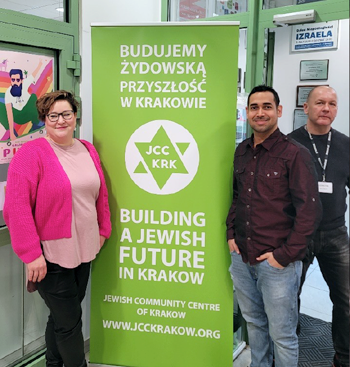
These days, the first glance towards the JCCK revealed reminiscences of Kazimierz's turbulent past: Ukrainian refugees wait for help at the entrance. There, JCCK educator Olga Adamowska explained to me that helping others regardless of their beliefs or ethnicities is part of the center’s mission. In fact, the center was donated, in part, by today’s King Charles after seeing, in 2022, the poor living conditions of elderly members of the Jewish community in Krakow.
At the Center, Olga started a lecture on the about the aftermath of WWII in Poland and the return of Jewish life to Krakow. Walking around Kazimierz with her, I dimensioned how titanic has been to return to a normal Jewish life in a country where 3 million Jews were exterminated (90%) and where at least 10,000 Jews now live. The number of historical Jewish buildings doesn’t match the Jewish life nowadays, so plenty of former synagogues and praying houses have been transformed into tourist attractions. However, the Popper Synagogue, today a famous Jewish-related bookstore and publishing house, is an example of the effort to adapt to reality without losing too much of the old times. It publishes books about Krakow, in which, of course, the JCCK also have participated. Other places, like the Old Jewish Cemetery and the Old Synagogue, remain connected to their original community.
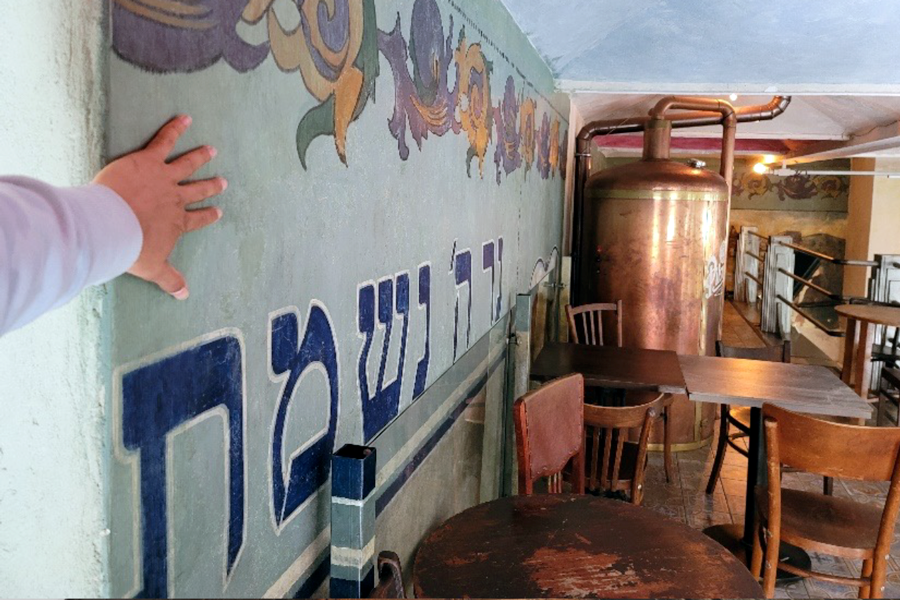
Image: Hevre, a former Jewish praying house turned restaurant
Besides the places of authentic Jewish connection, most of Kazimierz seems cosmopolitan. It has become an area full of creativity, indie galleries, a vintage clothing and antique stores, bars with a den atmosphere and chic spaces, and restaurants with Hebrew signs and kosher food for tourist (in a sort of Jewish-like “Disney,” as some Jewish locals told me). In fact, the sites that fell apart during the Soviet period, Olga recalled, have being restored because of the tourist boom that came after Steven Spielberg shot the film
Schindler’s List
in these streets.
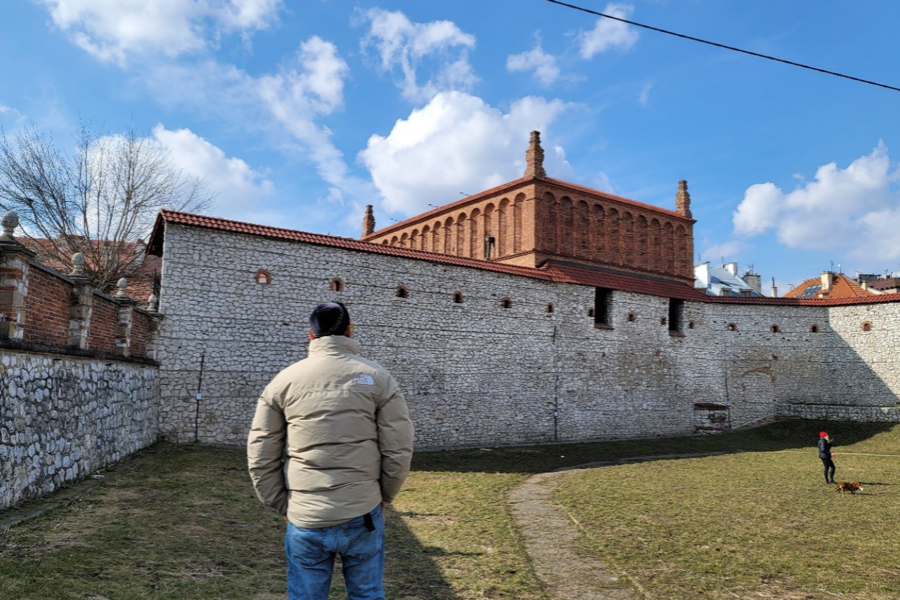
Image: View Towards the Old Synagogue
Regarding the Jews today, Olga explained to me how individuals of the so-called “unexpected generation” have been discovering their roots during the last years. These testimonies belong to descendants of the Jewish children that were hidden in Polish-Christian families during the Holocaust or descendants of people that concealed their offspring the true about their Jewish origin. Being part of this generation herself, Olga even had to face the overprotection of her family to become a voice of her generation.
 A symbol of the revival is the modern-looking synagogue Chabad Lubawicz, whose community is considered the most dynamic force in Jewish life today. Located right outside Kazimierz, while returning to the former city of Krakow, it had the Purim decoration when we visited it. The coincidence of learning about the revival of Krakow’s Jewish life in Purim times was also symbolic. As a joyous occasion that is embraced especially by kids for the costumes, the exchange of gift baskets, performances, and feasts, it reveals the vital role that future generations will play.
A symbol of the revival is the modern-looking synagogue Chabad Lubawicz, whose community is considered the most dynamic force in Jewish life today. Located right outside Kazimierz, while returning to the former city of Krakow, it had the Purim decoration when we visited it. The coincidence of learning about the revival of Krakow’s Jewish life in Purim times was also symbolic. As a joyous occasion that is embraced especially by kids for the costumes, the exchange of gift baskets, performances, and feasts, it reveals the vital role that future generations will play.
Image:Synagogue Chabad Lubawicz with Purim decoration
Exhibition “Łempicka” at the National Museum in Krakow
Courtesy of the Institute of European Studies at Jagiellonian University, I was granted a ticket for the exhibition "Łempicka" at the National Museum in Krakow (NMK) to finish my visit with a broader perspective. This was Poland's first-ever exhibition devoted solely to famed painter Tamara Łempicka (one of the most important artists of the 20th century), with 60 paintings representing the Art Deco style.
I paid particular attention to the portraits of refugees because Łempicka, an artist of Polish-Jewish descent, was a refugee twice. First, around 1918, she was forced to flee St. Petersburg from the Bolsheviks. Later, during a holiday visit to Austria around the 1930s, the artist was disturbed by a singing parade of the Hitler Youth. In 1939, she sold everything and moved from Paris to California. Similarly, Łempicka's dramatic masterpiece "The Refugees" evokes the despair in which survivors of displacement are trapped, which spoke to me for the peoples of all nations seeking protection today
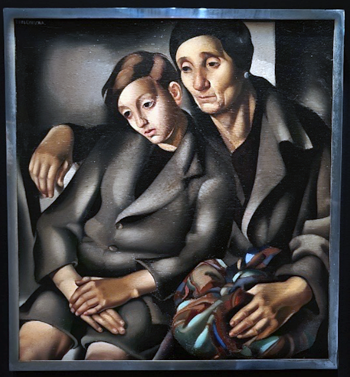
Images: (above): "The Refugees" (1937) at the Exhibition “Łempicka;” (below) Entrance to the “Łempicka” exhibition.
